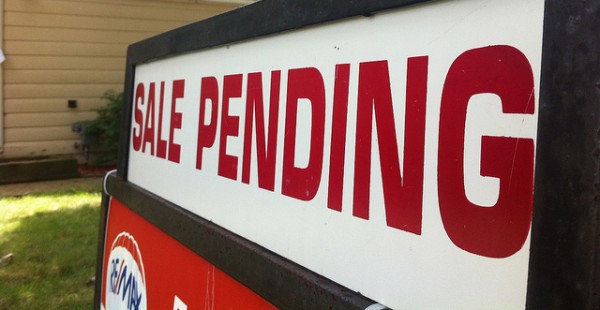Economic Snapshot: Existing home sales at 10-year high

March’s existing home sales pace surpasses January as the strongest month of sales since February 2007.
Existing home sales
Total existing home sales rose 4.4 percent to a seasonally adjusted annual rate of 5.71 million in March, from a downwardly revised 5.47 million in February. This is 5.9 percent above the previous year and the strongest month in a decade.
“The early returns so far this spring buying season look very promising as a rising number of households dipped their toes into the market and were successfully able to close on a home last month,” said Lawrence Yun, National Association of Realtors chief economist. “Although finding available properties to buy continues to be a strenuous task for many buyers, there was enough of a monthly increase in listings in March for sales to muster a strong gain. Sales will go up as long as inventory does.”
The median existing home price for all housing types was $236,400 in March, up 6.8 percent from March 2016. March’s price increase marks the 61st consecutive month of year-over-year gains.
Total housing inventory at the end of March increased 5.8 percent to 1.83 million existing homes available for sale, but is still 6.6 percent lower than the previous year and has fallen year over year for 22 straight months, Unsold inventory is at a supply of 3.8 months at the current sales pace.
First-time buyers made up 32 percent of sales in March, which is unchanged from February and up from 30 percent a year ago.
Consumer confidence
Consumer confidence declined in April to 120.3, down from 124.9 in March. Last month’s index marked the highest level of consumer confidence in 16 years.
The Present Situation Index decreased from 143.9 to 140.6 and the Expectations Index declined from 112.3 to 106.7.
“Consumer confidence declined in April after increasing sharply over the past two months, but still remains at strong levels,” said Lynn Franco, director of economic indicators at The Conference Board.
Consumers saying business conditions are “good” declined from 32.4 percent to 30.2 percent and those saying business conditions are “bad” increased slightly from 13.1 percent to 13.8 percent.
Consumers stating jobs are “plentiful” declined from 31.8 to 30.8, while those claiming jobs are “hard to get” was essentially unchanged at 19.1 percent.
The percentage of consumers expecting business conditions to improve over the next six months decreased from 26.9 percent to 24.8 percent and those expecting conditions to worse rose from 8.5 percent to 10.9 percent.
The proportion of consumers expecting more jobs in the months ahead declined fro 23.8 percent to 23.0 percent and those anticipating fewer jobs increased from 12.7 percent to 13.1 percent. The percentage of consumers expecting their incomes to increase declined from 22.5 percent to 19.3 percent, while the proportion expecting a decrease held steady at 7.5 percent.
New home sales
Sales of new single-family houses were at a seasonally adjusted annual rate of 621,000 in March, according to estimates released jointly by the U.S. Census Bureau and the Department of Housing and Labor. This is 5.8 percent above the revised February rate of 587,000 and 15.6 percent above the March 2016 estimate of 537,000.
The median sales price of new houses sold in March 2017 was $315,100 and the average sales price was $388,200.
The seasonally adjusted estimate of new houses for sale at the end of March was 268,000, which represents a supply of 5.2 months at the current sales rate.




